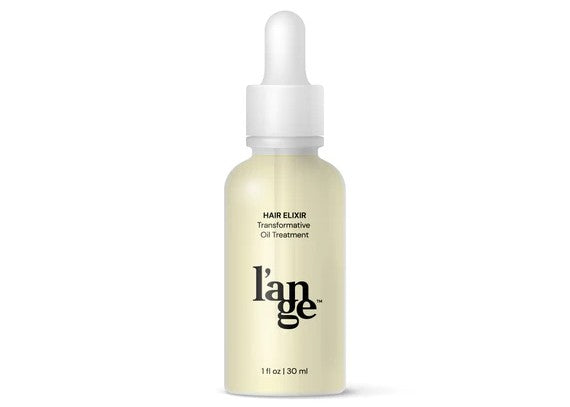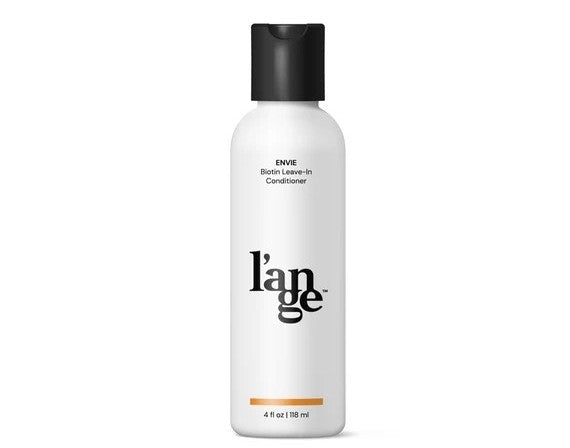
This is Why Your Hair is Shedding
Share
Did you know that our hair grows in three different stages?
That’s right, hair has a life cycle that consists of: a growth, a resting, and a shedding phase.
Hair shedding, although bothersome, is a totally normal part of the process.
On average, most of us shed anywhere from 50 to 100 hairs per day.
Sounds like a lot, but when you think about it…
Humans have around 100,000 hairs on their head!
This means that normal daily shedding involves only 0.05-0.1% of our hair.
Though finding hair in your hair brush, drain or on the floor may seem to be cause for concern, please don’t stress.
Today, we’re going to talk about things that contribute to excess hair shedding and things you can do to stop it.
WHAT CAUSES HAIR SHEDDING?

Excessive hair shedding is often the result of lifestyle changes, or things that cause stress or trauma to our bodies.
Let’s take a closer look at the causes...
Chemical Treatments - Dyeing and other chemical processes can dry your hair out, causing a loss of elasticity, breakage and ultimately more shedding.
Bodily Changes - Dramatic weight loss, starting new birth control, having a baby, recovering from surgery and entering into menopause can take a toll on our hormones. These changes can lead to a shortened hair growth phase before hair begins to shed.
Stress - Breakups, the loss of a job or a loved one, we’ve all been there. Stress floods our body with hormones, which can derail our eating and sleeping habits, disrupting our digestion and sometimes even causing scalp irritations to flare up.
Seasonal Changes - Ever notice that your hair sheds more during the fall? It’s believed that hair remains thicker during summer to protect our scalp from sun exposure and will shed once we move into colder weather. This change in season can also dry out our hair and scalp, making shedding more prevalent.
Too-Tight Hairstyles - Wearing tight braids, buns and ponytails adds constant tension on your follicles and can eventually cause thinning at the hairline.
Nutrient Deficiencies - Hair requires a wide variety of nutrients to help keep it strong, shiny and healthy. If certain nutrients are lacking, it can have noticeable effects.
HERE ARE 6 THINGS YOU CAN DO ABOUT HAIR SHEDDING
1 - Get Enough Sleep

Getting the recommended seven to eight hours of sleep each night is crucial to our health. Sleep not only replenishes our body and mind, but it also helps regulate our stress hormones. Keeping these hormones in check will have a positive impact on our daily lives and the overall health of our hair.
2 - Eat a Balanced Diet

Healthy hair starts with a healthy diet. It’s important to feed your body a variety of nutrient-rich foods to ensure your skin, hair and nails look and feel their best. Hair loves Omega-3 fatty acids, which fight inflammation throughout the body and promote hair growth. You’ll find these in fish, nuts and seeds. Also look for foods rich in iron, lean proteins, healthy fats and vitamins.
3 - Add a Biotin Supplement

Another way to encourage healthier, stronger hair from the inside is by taking a biotin supplement. Biotin, a B vitamin that we don’t always get enough of from our diet, promotes keratin production and hair growth. L’ange Biotin Gummies are a vegan, fruit-flavored treat that makes it easy (and tasty) to 5,000 mcg of the strand-supporting vitamin.
4 - Let Loose

We know that constant pulling and tugging on our follicles can lead to excessive shedding. Experiment with looser hairstyles that are gentle on our scalp and strands. Instead of that tight topknot or ponytail, why not try a loose pony, braid or sideswept style? It’s also a good idea to occasionally give your hair a break from heat styling and swap for air drying.
5 - Treat Your Hair & Scalp

Adding a scalp treatment into your hair care routine can help address concerns at the root of the problem. Whether you’re looking to combat dryness, irritation, oil, or buildup, your hair and scalp will definitely reap the benefits. A good multitasking treatment, Hair Elixir Transformative Oil Treatment is full of antioxidant-rich oils to soothe and nourish your hair and scalp. From strengthening biotin, to scalp-stimulating caffeine, and antibacterial lavender, rosemary and mint, you’re sure to enjoy a calm, comfy scalp and soft, shiny hair with improved elasticity. Get the most out of your treatment by giving yourself a massage as you apply it.
6 - Keep it Conditioned

Another key to combating excess hair shedding is to keep your hair hydrated and maintain its elasticity. Using quality hair care products that infuse strands with moisture will help achieve this. Try a deep-conditioning hair masque once or twice a week, as well as a leave-in conditioner. Envie Biotin Leave-In Conditioner is an excellent choice because it contains panthenol and coconut oil to lock-in hydration, plus hero ingredient, biotin!
Hair shedding can be frustrating and sometimes alarming. It’s important to remind yourself that it is a normal and natural part of the hair growth cycle. If you find yourself shedding more than 50-100 hairs per day or are losing hair in visible patches, it’s best to contact your physician to help you find the underlying cause. When it comes to hair shedding, it’s all about creating balance in your life and your hair care routine. I hope these tips will help you stress less and get the most out of your hair.
Have any questions or tips for shedding hair?
Share with us on social: Instagram @langehair and Facebook @getlange, using hashtag #langelocks.
Citations:
1 - Donna Freydkin, “Why Your Hair is Shedding and What You Can Do About It”, July 19, 2017, https://www.allure.com/story/how-to-deal-with-shedding-hair.
2 - Allie Flinn, “How to Stop Your Hair From Shedding, Once and for All”, September 11, 2020, https://www.byrdie.com/how-to-stop-hair-shedding-4686916.
3 - Victoria Jowett & Keeks Reid, “This is Why Your Hair is Falling Out AND How to Stop It”, November 24, 2020, https://www.cosmopolitan.com/uk/beauty-hair/advice/a48958/hair-loss-reasons/.